
FEATURES
AI Codes
AI Images
AI Contents
AI Voiceovers
AI Speech to Text
AI Chat / Chatbots
File Chat
Web Chat
AI Vision
TECHNOLOGY STACK





ATBRIDGES AI APPLICATION

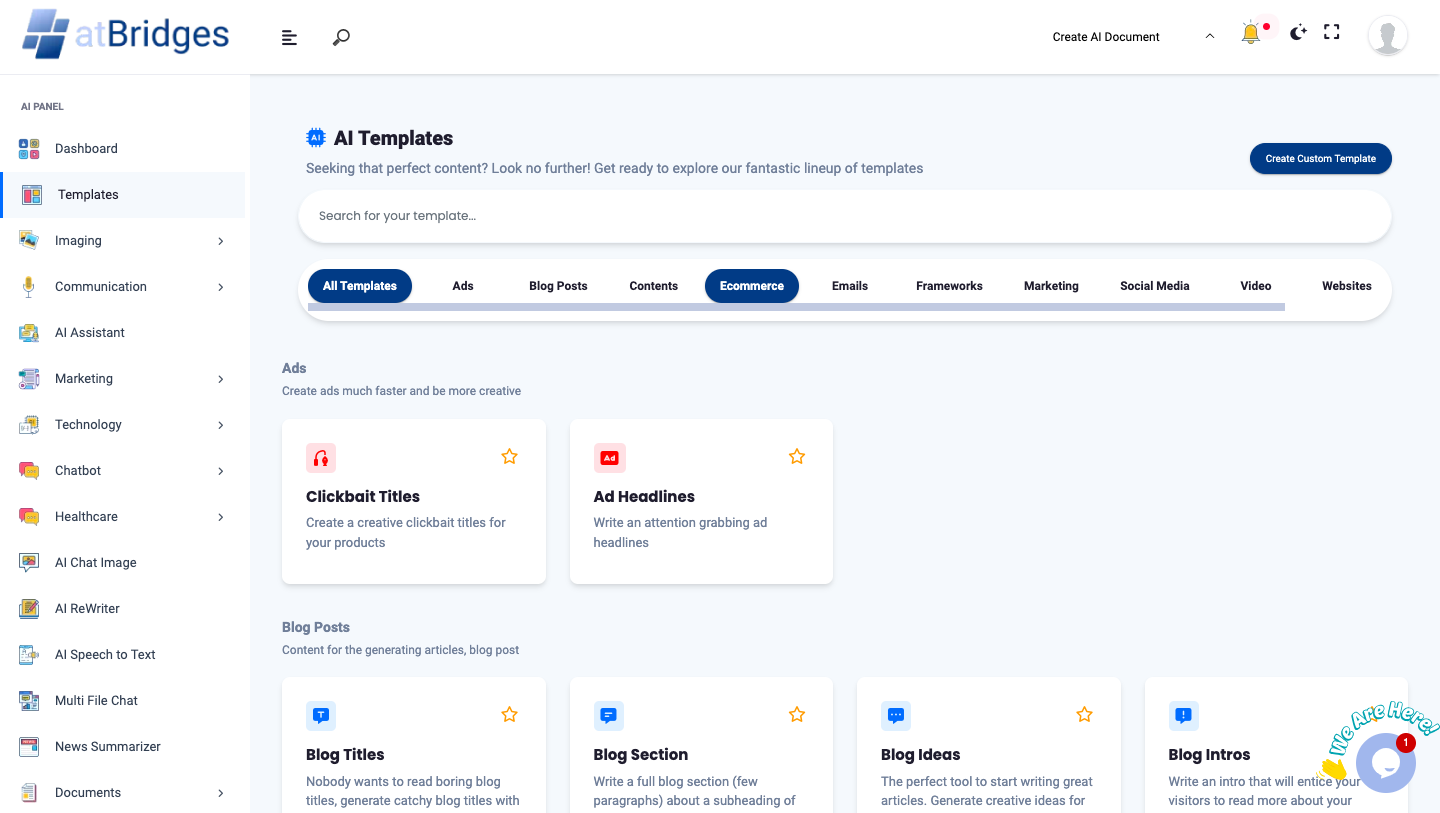
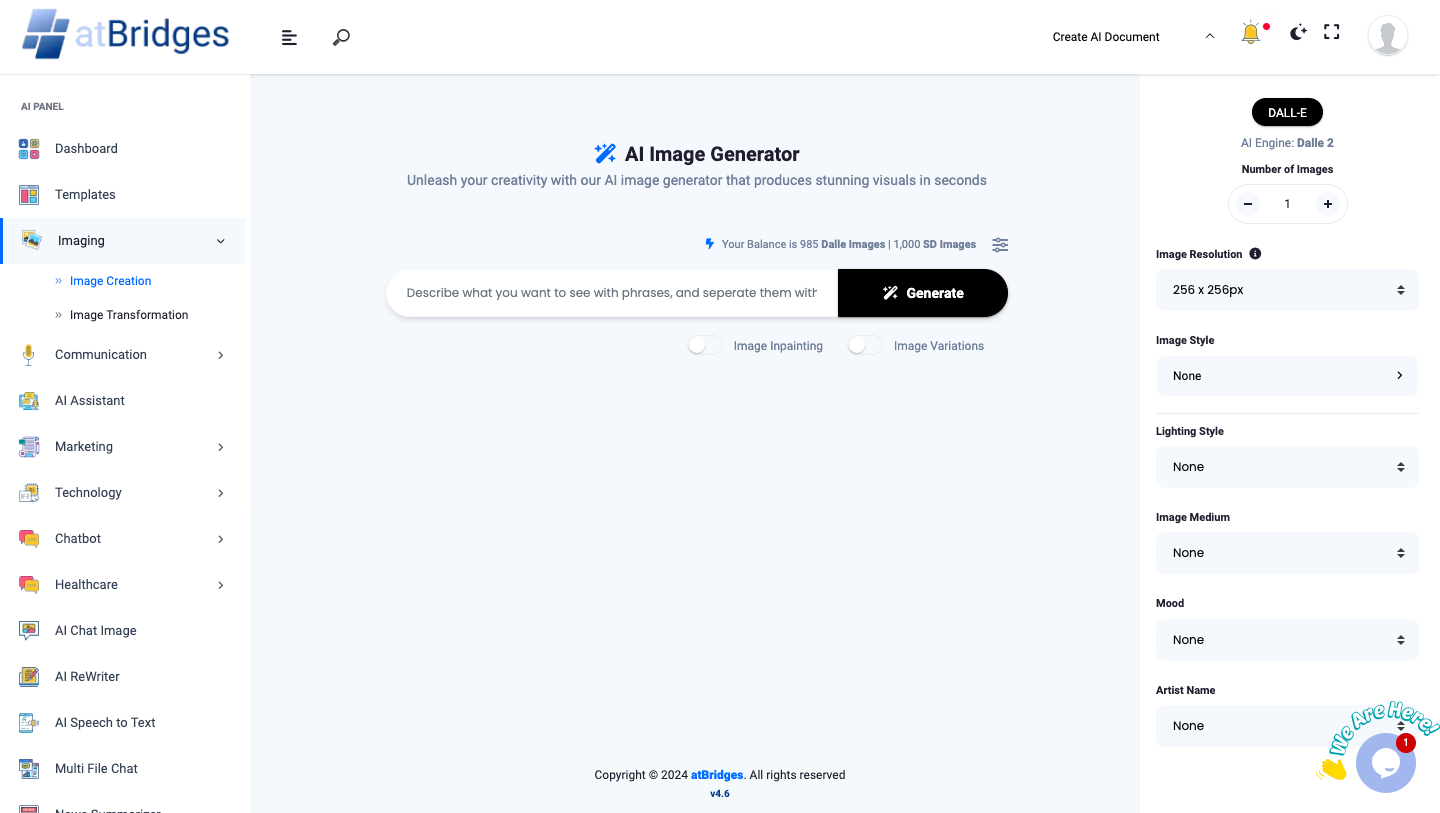
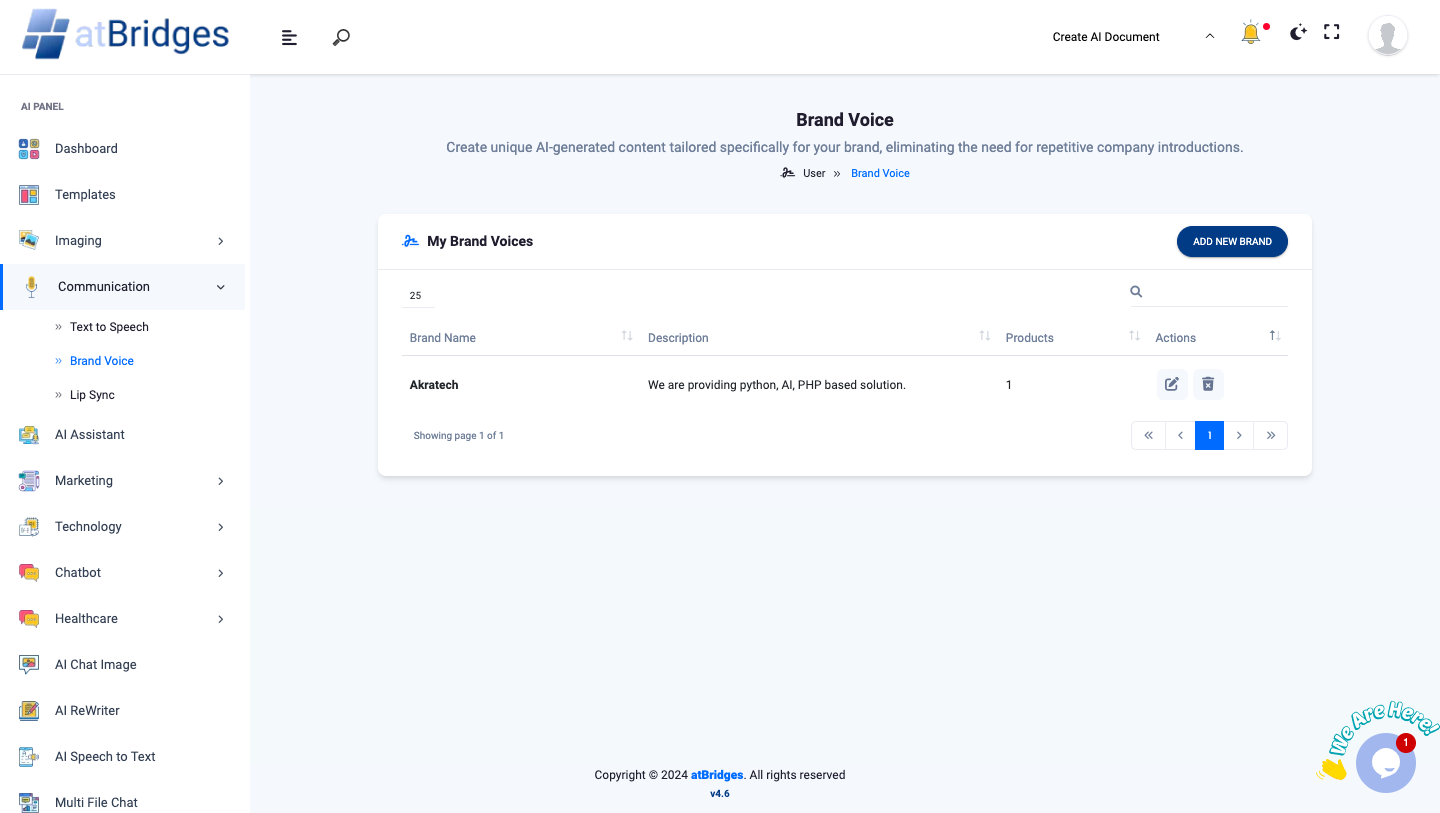
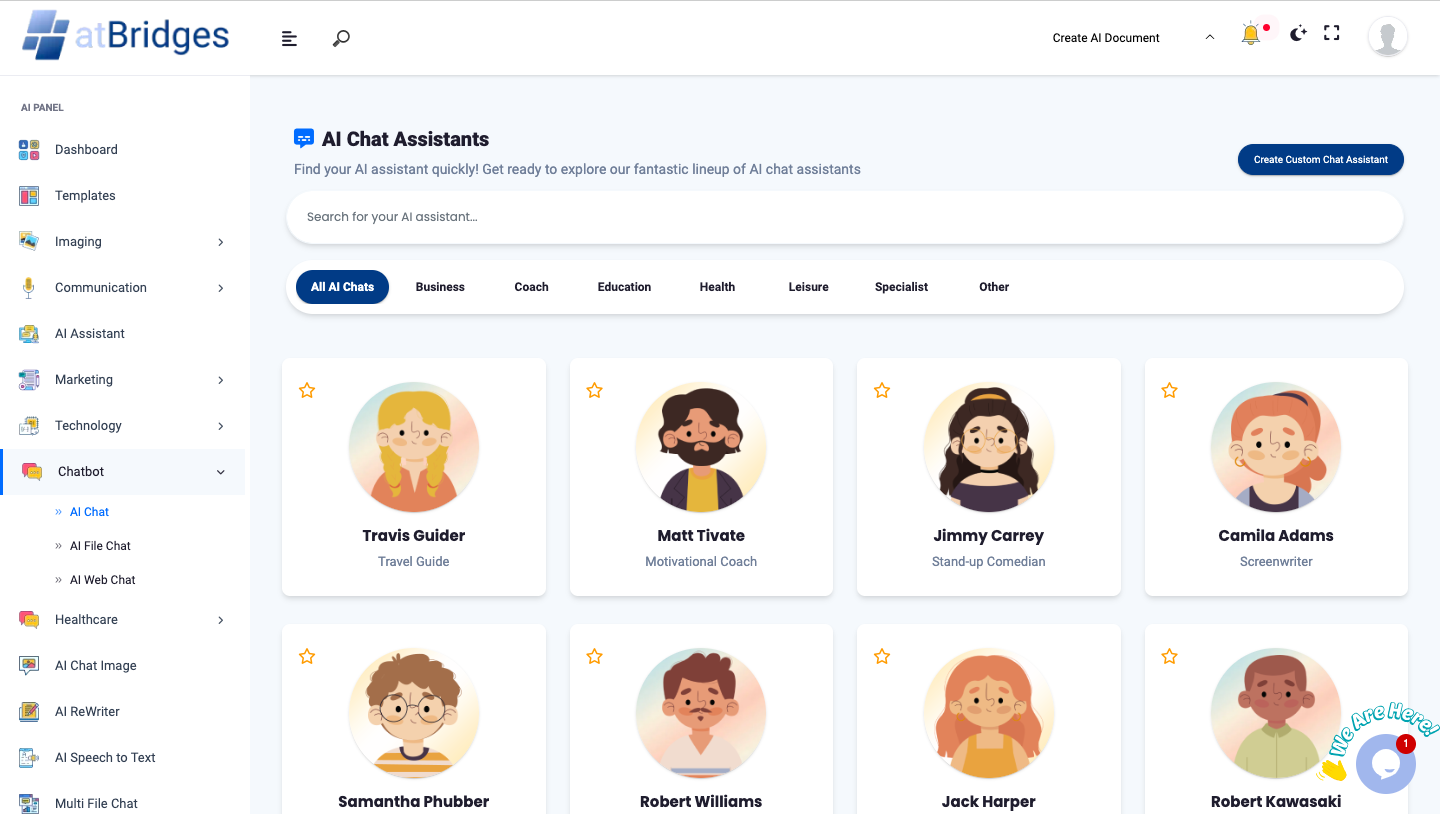
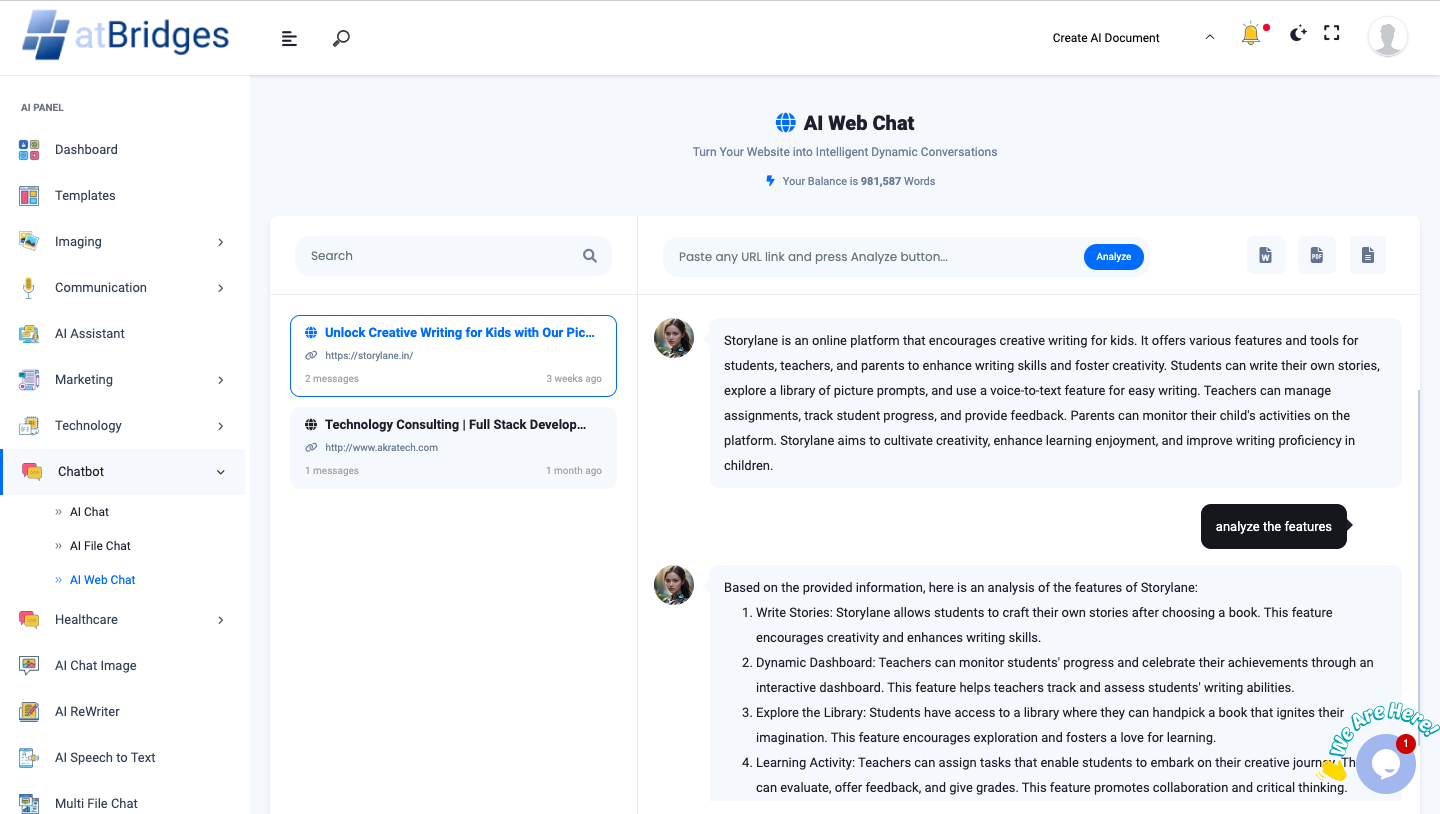

AtBridges, your all-in-one AI solution hub, where cutting-edge technology meets seamless efficiency. With AtBridges, harness the power of AI images, AI codes, AI vision, AI chatbots, AI contents, AI voiceovers, and AI speech-to-text capabilities—all in one spot. Our platform offers a variety of templates to streamline your creative process and elevate your projects to new heights. From crafting captivating visuals to optimizing code, interpreting images, engaging in natural conversations, generating dynamic content, and transcribing speech with precision, AtBridges empowers you to achieve more with less effort. Welcome to a new era of AI-driven innovation, all at your fingertips.
- Data Quality and Quantity: Acquiring sufficient and high-quality data for training AI models can be challenging, especially in niche domains where labeled data is scarce.
- Algorithm Complexity: Developing and fine-tuning complex algorithms that deliver accurate and reliable results requires significant expertise and computational resources.
- Interpretability and Explainability: Ensuring that AI algorithms are transparent and understandable to users and stakeholders is essential for building trust and acceptance.
- Ethical and Bias Concerns: Addressing ethical considerations such as fairness, transparency, and bias in AI algorithms to prevent unintended consequences or discriminatory outcomes.
- Regulatory Compliance: Navigating the evolving regulatory landscape surrounding AI technologies, including privacy laws, data protection regulations, and industry standards.
- Resource Constraints: Managing limited resources such as computational power, storage, and skilled personnel, especially for startups and small teams.
- Scalability and Performance: Designing AI platforms that can scale efficiently to handle increasing user demand and workload without compromising performance
- User Acceptance and Adoption: Convincing users of the value proposition and usability of AI-driven features, overcoming skepticism, and addressing concerns about job displacement or loss of control.
- Integration with Existing Systems: Ensuring seamless integration with existing software infrastructure and workflows within organizations, minimizing disruption and compatibility issues.
- Continuous Learning and Improvement: Establishing mechanisms for ongoing learning and improvement of AI models based on feedback, new data, and evolving user needs.
- Data Quality and Quantity:
Collaborate with domain experts to identify relevant data sources and collect high-quality labeled data.
Augment data using techniques like data synthesis, transfer learning, or active learning to overcome scarcity. - Algorithm Complexity:
Invest in research and development to refine algorithms and optimize their performance.
Utilize pre-trained models and transfer learning to leverage existing knowledge and reduce the need for extensive training. - Interpretability and Explainability:
Incorporate techniques such as model interpretability methods, feature importance analysis, and model visualization to enhance transparency.
Provide clear explanations and documentation for how AI algorithms make decisions and recommendations. - Ethical and Bias Concerns:
Implement fairness-aware algorithms and bias detection mechanisms to mitigate biases in AI systems.
Conduct thorough audits and evaluations to identify and address ethical implications throughout the development lifecycle. - Regulatory Compliance:
Stay informed about relevant regulations and standards governing AI technologies.
Establish robust data governance practices, privacy policies, and compliance frameworks to ensure adherence to legal requirements. - Resource Constraints:
Prioritize resource allocation based on critical needs and strategic objectives.
Explore cloud-based solutions and outsourcing options to leverage scalable infrastructure and specialized expertise. - Scalability and Performance:
Design architectures that support horizontal scaling and distributed computing for handling increased workloads.
Continuously optimize algorithms and infrastructure to improve efficiency and performance over time. - User Acceptance and Adoption:
Conduct user research and usability testing to understand user needs and preferences.
Provide user training, education, and support to foster confidence and familiarity with AI technologies. - Integration with Existing Systems:
Develop flexible APIs and interoperability standards to facilitate seamless integration with third-party systems.
Collaborate with IT teams and stakeholders to ensure compatibility and minimize disruption during implementation. - Continuous Learning and Improvement:
Establish feedback loops and mechanisms for gathering user feedback and monitoring AI performance.
Invest in ongoing research and development to stay ahead of technological advancements and evolving user requirements.
- Improved Performance and Accuracy: Enhancing data quality, algorithm complexity, and scalability can lead to AI models that deliver more accurate and reliable results, boosting user confidence and satisfaction.
- Enhanced Transparency and Trust: Addressing interpretability and ethical concerns fosters transparency and trust in AI systems, leading to increased adoption and acceptance by users and stakeholders.
- Regulatory Compliance and Risk Mitigation: Adhering to regulatory requirements and ethical standards minimizes legal risks and potential reputational damage, ensuring long-term viability and sustainability for the AI platform.
- Efficient Resource Utilization: Optimizing resource allocation and scalability improves operational efficiency, reduces costs, and enables the platform to handle growing demands and workloads effectively.
- User Engagement and Adoption: By prioritizing user needs, providing intuitive interfaces, and offering robust support and training, the platform can enhance user engagement and drive higher adoption rates among target audiences.
- Seamless Integration and Interoperability: Developing flexible APIs and integration solutions facilitates seamless integration with existing systems, enabling smoother deployment and integration within organizations’ workflows.
- Continuous Learning and Innovation: Establishing feedback loops and mechanisms for continuous improvement fosters a culture of innovation and agility, enabling the platform to evolve and adapt to changing market dynamics and user requirements over time.
Unlock the Power of AI with AtBridges
Revolutionize your projects with advanced AI capabilities in images, code, voiceovers, chatbots, and more.
Ready to take your business to the next level with AI-driven innovation?
